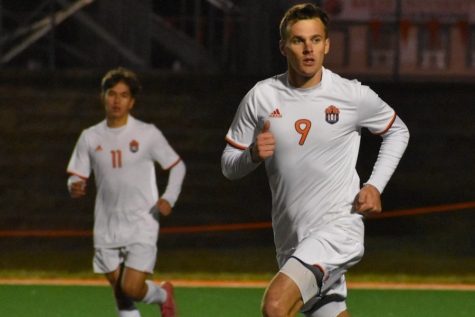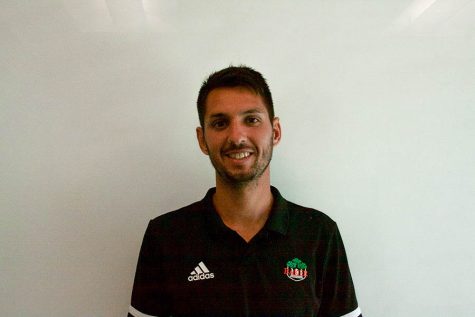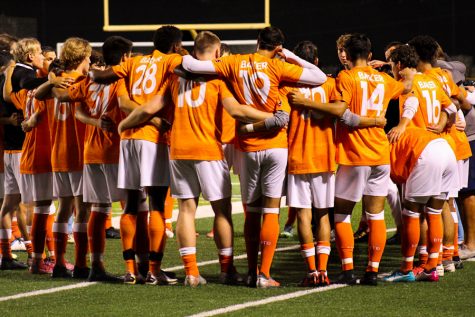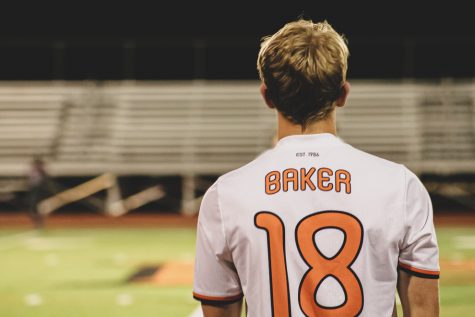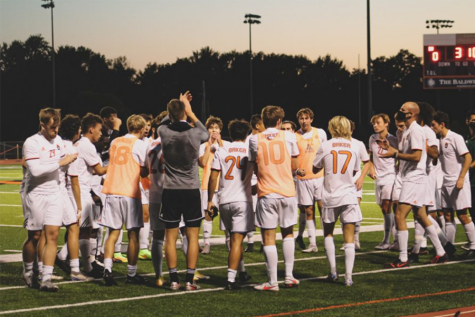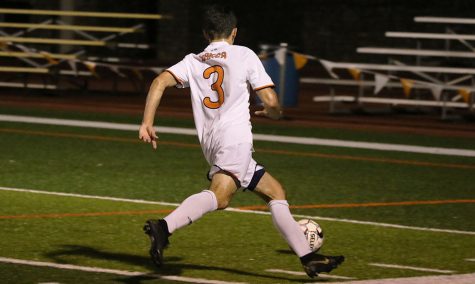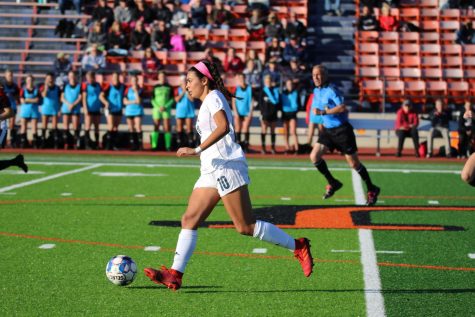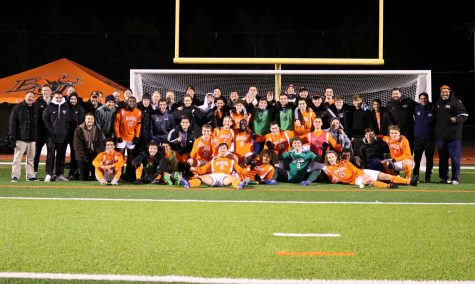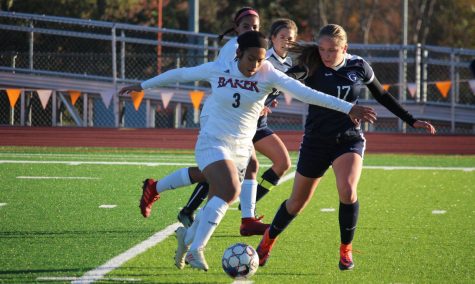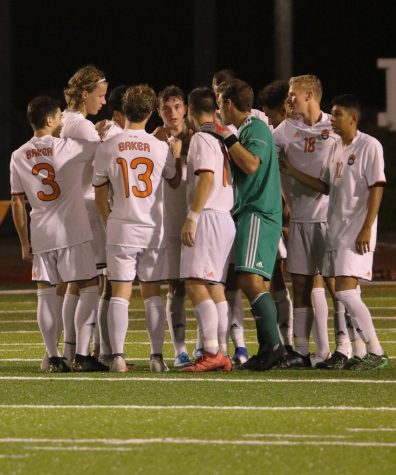Sporting KC strengthens soccer’s popularity
April 11, 2014
Sporting Kansas City won the Major League Soccer Cup championship in 2013. Those of us who follow the team know how big of a deal this is for Kansas City, but many people haven’t been along for the ride and don’t understand how Sporting KC has become a brand name in the Kansas City area.
As the 2014 World Cup approaches, this is the perfect time for Kansas City and the United States to be fully invested into soccer. Based on Sporting KC’s 18-year history, don’t be surprised if someday soccer is the most popular sport in Kansas City.
Kansas City’s start in soccer was the Kansas City Wizards. Their jerseys, typically based on the color blue, also featured rainbow designs. For some in Kansas City, this was their first impression of soccer: a bunch of guys in rainbow jerseys kicking a ball around a huge field in a sport that can end as a tie. Safe to say that this was not a good start for soccer.
The Wizards were founded by former Kansas City Chiefs owner Lamar Hunt. And the team started out playing its games at Arrowhead Stadium. Arrowhead has a capacity of over 80,000, and on a good night the Wizards were bringing in 10,000 fans. Getting fans to come out and watch a game was the biggest obstacle for Major League Soccer.
The Wizards won the MLS Cup championship in 2000, which was Kansas City’s first championship since the 1985 World Series, but there was still no city-wide buzz about soccer.
Although attendance numbers were low, the Wizards were lucky enough to have a small but passionate fan group called the Cauldron. These were typically young adults who grew up playing soccer and had found an interest in the game.
At the same time, an even younger group of potential professional soccer fans was learning the game through youth soccer programs. Club teams were becoming increasingly popular for all youth of all ages, especially in Johnson County. Soccer was finally starting to find its place in Kansas City, but the Wizards were not yet part of that success.
As 2006 was approaching, it became public knowledge that the Wizards were for sale and that the team might leave Kansas City. Saving the Wizards required a campaign from the city’s soccer fans.
Ultimately, Lamar Hunt sold the team to Ongoal, LLC, which kept the team in Kansas City and later turned into the company Sporting Club. This is when the transformation began.
Ongoal eventually released plans for building a brand new, state-of-the-art stadium in Kansas City, Kan., by 2011. With this new stadium, there would be a name change for the club from the Wizards to a more European style Sporting Kansas City. At first fans did not like this name and found it a little strange.
During the construction of the new stadium, the Wizards played their home matches at Community America Ballpark, the home of an independent league baseball team, the Kansas City T-Bones. The soccer surface at Community America Ballpark was the shortest in the MLS and possibly all of professional soccer, because it was played on a baseball field. Some of the best seats at the stadium were sitting in the outfield lawn. The Wizards were becoming the laughingstock of MLS.
Sporting KC began its 2011 season playing in Community America Ballpark, but on June 9, 2011, soccer came to life in Kansas City. In the first match held at Livestrong Sporting Park, Sporting KC played to a scoreless draw with the Chicago Fire. The attendance was an over-capacity crowd of 19,925.
Sporting KC would finish the season with a home record of 9-2-6, and Livestrong Sporting Park became the best home field advantage in Major League Soccer. It would later be trademarked as “The Blue Hell”(and the “Livestrong” affiliation would be dropped).
The players on the team were starting to build fan recognition throughout the city as well, including homegrown Blue Valley West High School defender Matt Besler. Besler is now a member of the U.S. national team and is preparing to play in the World Cup in Brazil this summer.
Another local star, Graham Zusi, is a starter for the U.S. national team as well. Zusi was named an MLS all-star in 2012 and 2013.
Danish Goalkeeper Jimmy Nielsen also captured the hearts of Sporting KC fans, signing with the team in 2010. The white haired, middle-aged goalie was known by the nickname the White Puma. Nielsen was an all-star in 2010 and was the MLS Goalkeeper of The Year in 2012.
With a new stadium, increased fan support and a solid roster all in place, Sporting KC only needed a little more success on the field to fully establish its brand.
The 2012 season was a good start to that success. Average home attendance was 105 percent of stadium capacity. Although Sporting KC was eliminated by Houston in the MLS playoffs, the team did win the Lamar Hunt Open Cup, which goes to the winner of a midseason tournament that includes professional teams from all across the United States. Sporting KC won the title with a dramatic win over the Seattle Sounders in a match that ended with penalty kicks.
And then 2013 was the season soccer fans had waited for their whole lives. On Dec. 7, in the coldest game in MLS history and after 90 minutes plus two 15-minute extra-time periods and 20 penalty kicks, Sporting KC defeated Real Salt Lake to claim the MLS Cup. The ESPN cameras and broadcast crew at the stadium that day could not have asked for a more dramatic finish.
Twenty-five years ago nobody would have put soccer and Kansas City on the same map. Now Kansas City is sometimes called the Soccer Capital of America. Overland Park is now home to the largest turf soccer complex in the country, hosting youth soccer tournaments all year long.
It’s certainly not crazy to envision a day when soccer could be Kansas City’s most popular sport.



